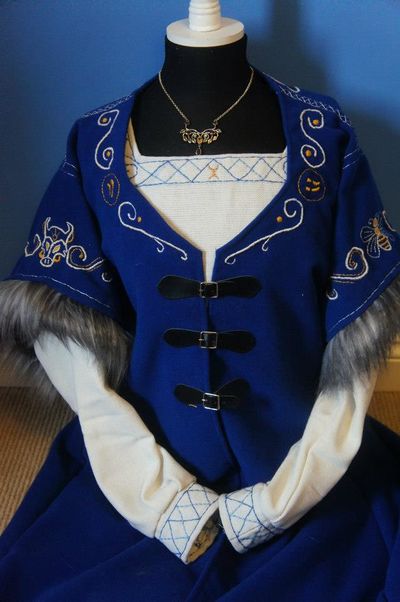Volhov's Robe
(→Rules) |
m (→Rules) |
||
| Line 15: | Line 15: | ||
A volhov's robe allows a magician to form a temporary group with other users of this item, but they do not create a true coven bond when doing so. When two (or more) solo ritualists use these robes to perform a ritual together they cannot make use of ritual [[:Category:Paraphernalia|paraphernalia]], or other effects that target the coven bond (such as [[Twist of Moebius]]. | A volhov's robe allows a magician to form a temporary group with other users of this item, but they do not create a true coven bond when doing so. When two (or more) solo ritualists use these robes to perform a ritual together they cannot make use of ritual [[:Category:Paraphernalia|paraphernalia]], or other effects that target the coven bond (such as [[Twist of Moebius]]. | ||
<!-- In a real sense, this robe lets you act as if you were in a coven of one person, and then assist another coven as per use of archmage regalia or a web of celestial attunement --> | |||
Revision as of 20:18, 3 January 2018
Description
A very long time ago, robes such as these were used as the basis of all co-operative ritual magic. Magicians everywhere made use of them, and of robes like them. When magicians began to understand how to form covens, however, the robes became less and less relevant and eventually fell out of favour. In the Empire today, they are primarily used by ritualists who have for one reason or another lost their coven or chosen to avoid being tied down to a single band. They allow these individuals to offer aid to existing covens without needing to swear that band's oath, or become bonded to the group.
Once called simply ritual robes, today they are named for the itinerant volhov. The wandering Varushkan magicians are the people who make the most use of them, appreciating the ability to stay mobile and independent while at the same time being able to offer their magical expertise to cabalists and other volhov that they encounter on their adventures. Even the Urizen and the Navarr, both nations who see great value in a skilled individual being able to help an established coven, have taken to calling them by the common name rather than continuing to call them the diplomat's robe as they allegedly did during the early years prior to the founding of Terunael.
They are also moderately popular in The League where they are often designed to resemble the long, multi-coloured coats that are occasionally fashionable with street performers. A small sub-culture of League mountebanks with ritual lore are known to make extensive use of them, offering their assistance as 'ritualists for hire' to more organised mountebank bands and even occasionally coming together to form highly informal pseudo-covens in pursuit of less-then-reputable enterprises.
Some foreign nations may still make extensive use of these items, especially those who have not embraced the idea of forming covens. A similar effect can be gained by using a Web of Celestial Attunement, a covenstone that allows a coven to aid another coven.
Rules
- Form: Armour. Takes the form of a robe. You must be wearing this robe to use its magical properties.
- Requirement: You must have the magician skill to bond to this item.
- Effect: Twice per day you can take part in a ritual with a coven of the same nation. When you use this ability, it counts towards the daily limit of coven rituals you can perform. You cannot be in a coven when you are bonded to this robe. Two (or more) solo ritualists with Volhov's robes may use the robes to perform a coven ritual together.
- Materials: Crafting a volhov's robe requires five measures of dragonbone and three measures of iridescent gloaming. It takes one month to make one of these items.
A volhov's robe allows a magician to form a temporary group with other users of this item, but they do not create a true coven bond when doing so. When two (or more) solo ritualists use these robes to perform a ritual together they cannot make use of ritual paraphernalia, or other effects that target the coven bond (such as Twist of Moebius.
